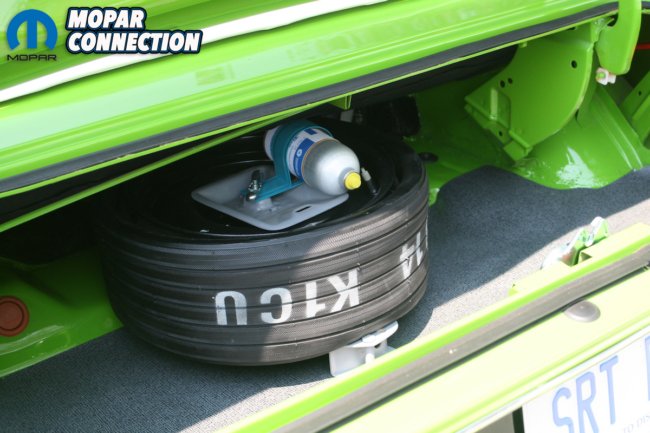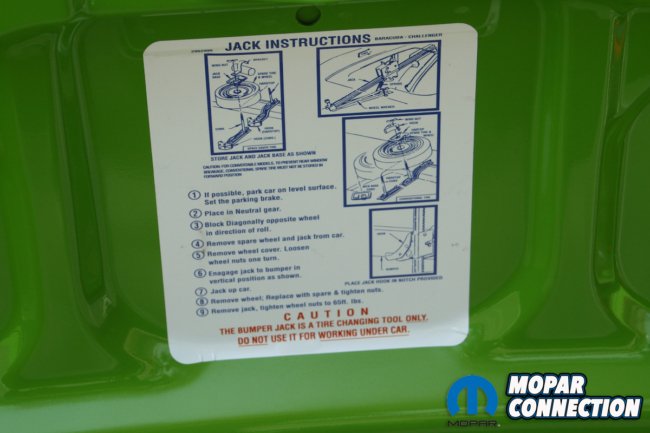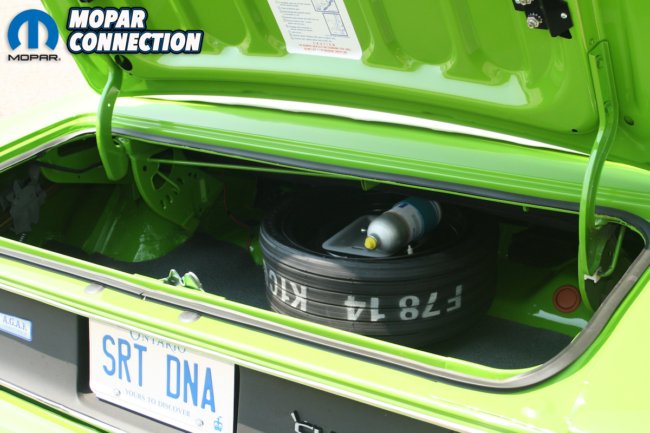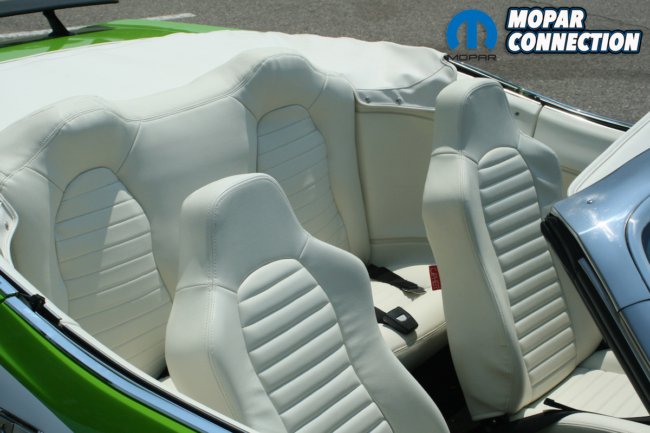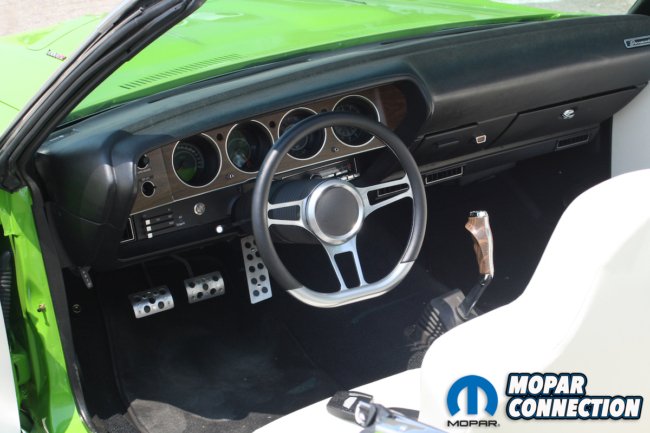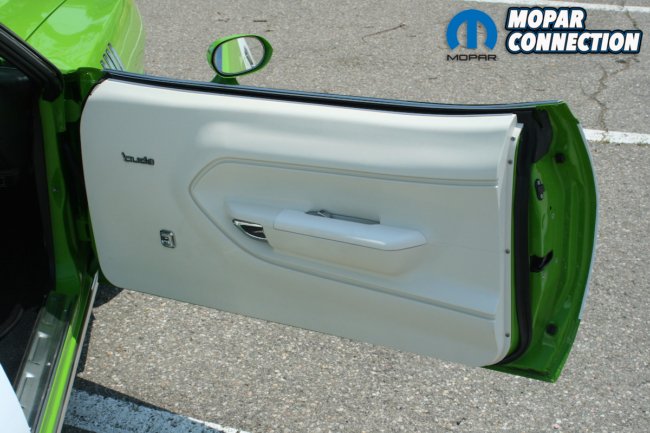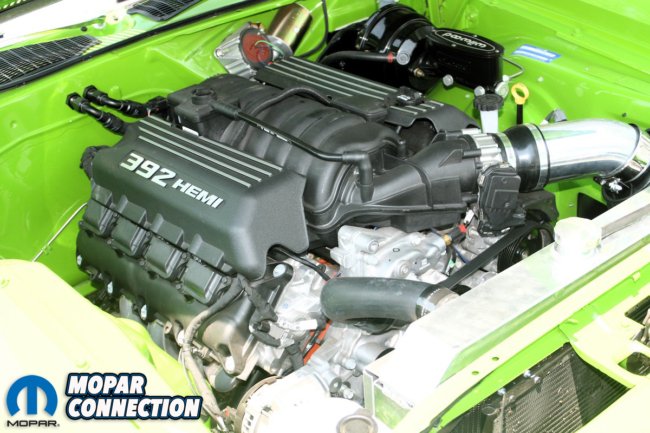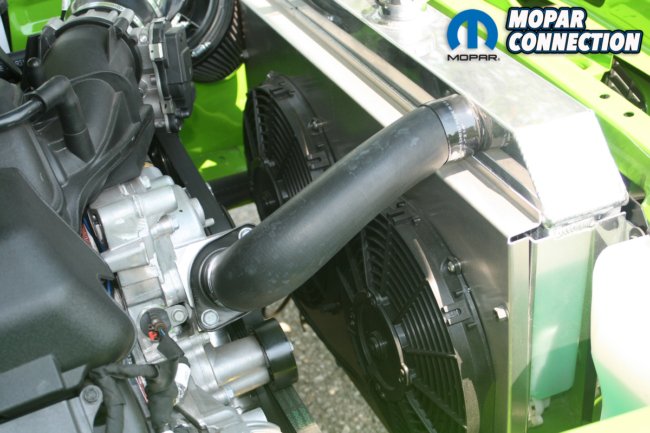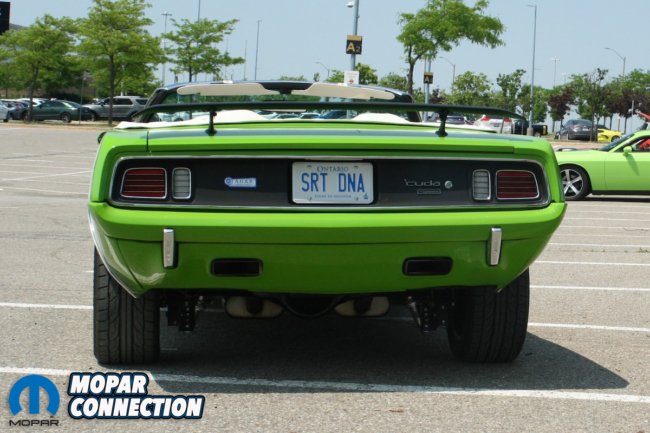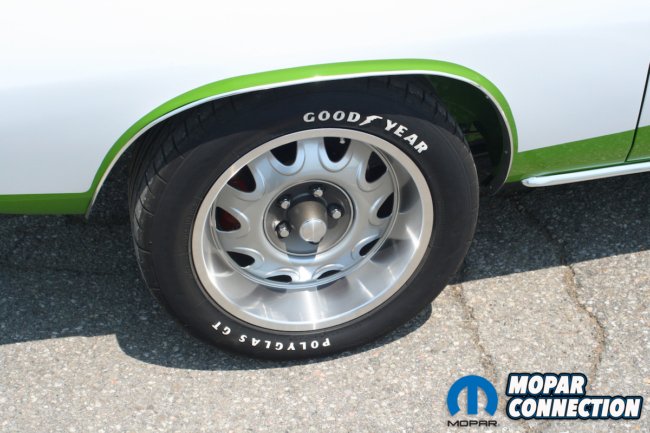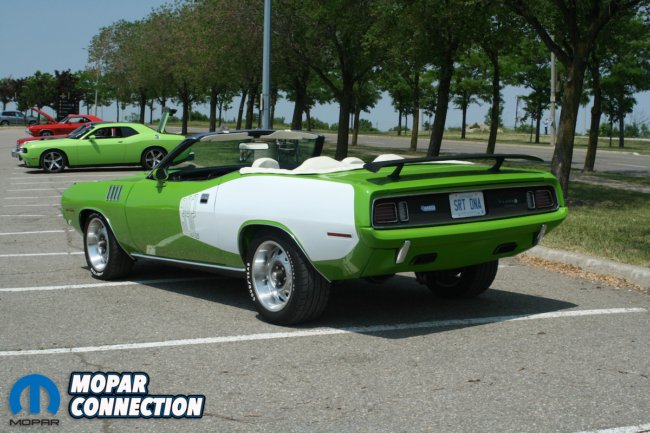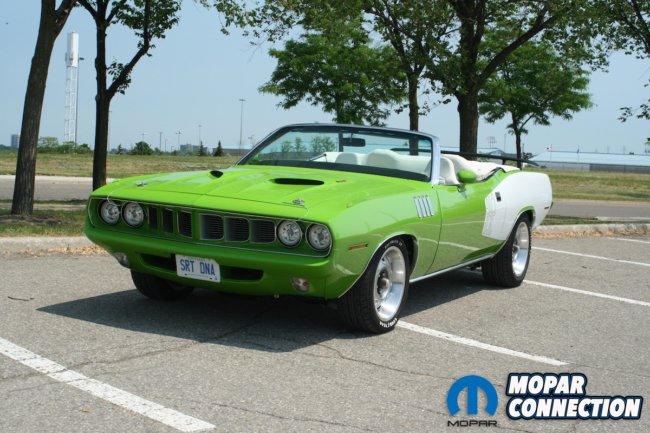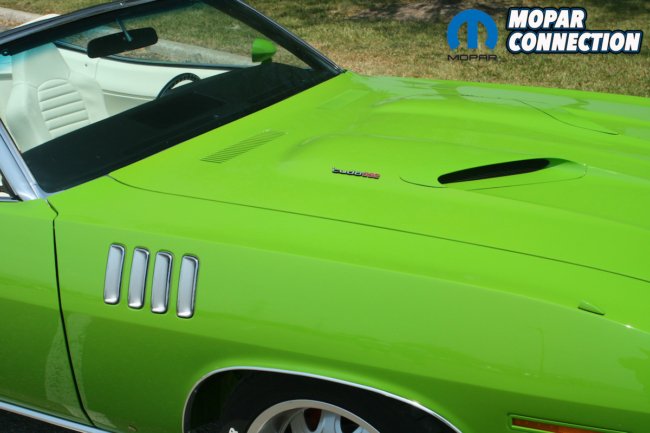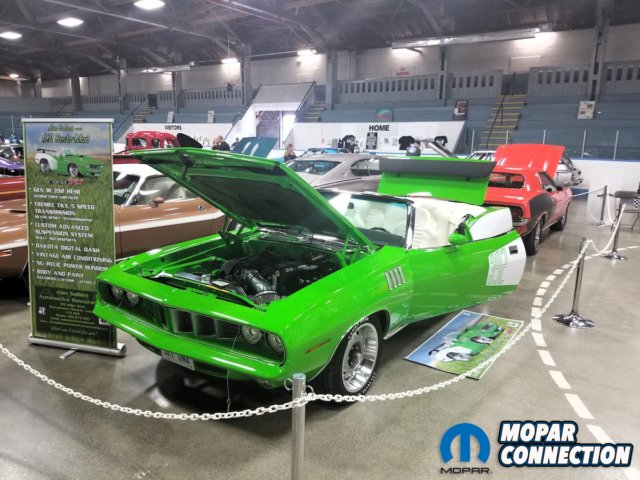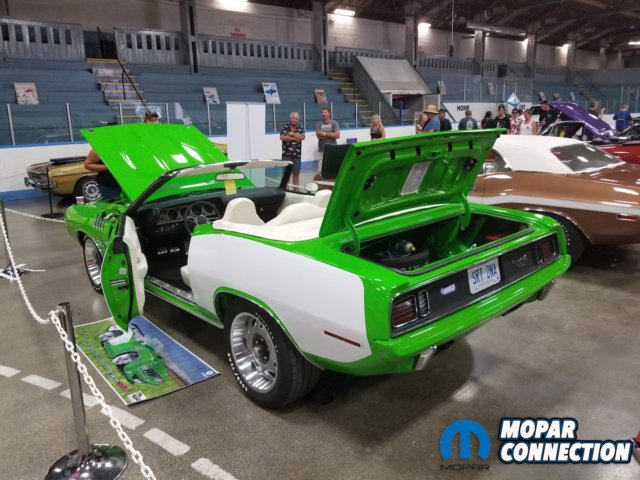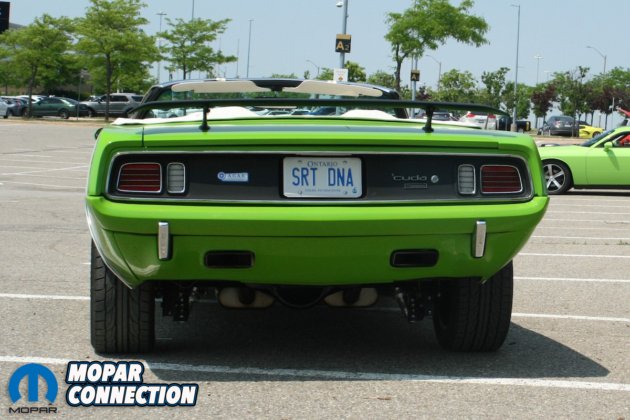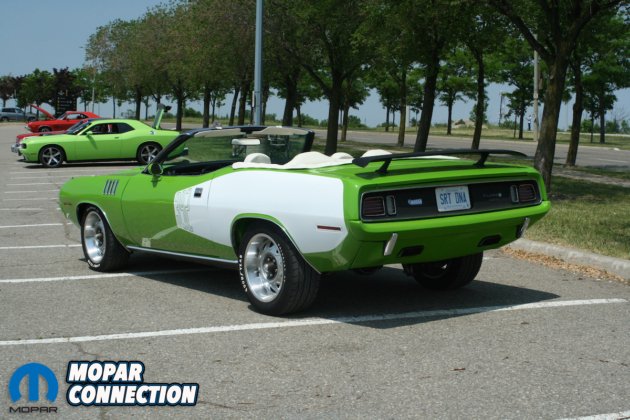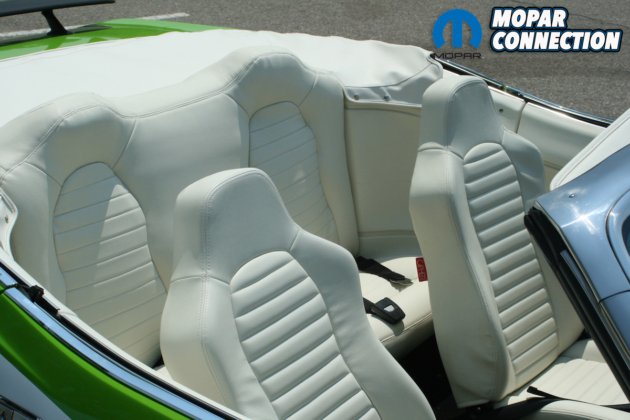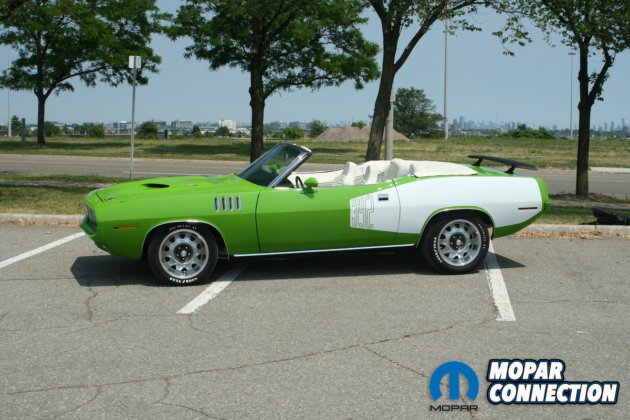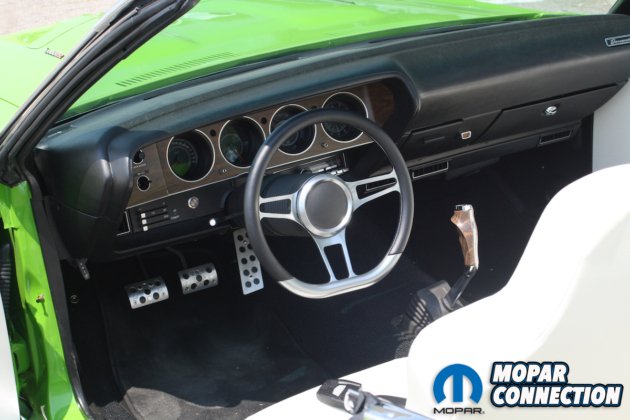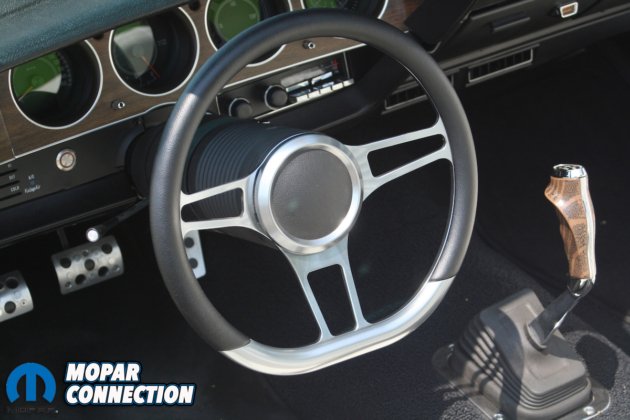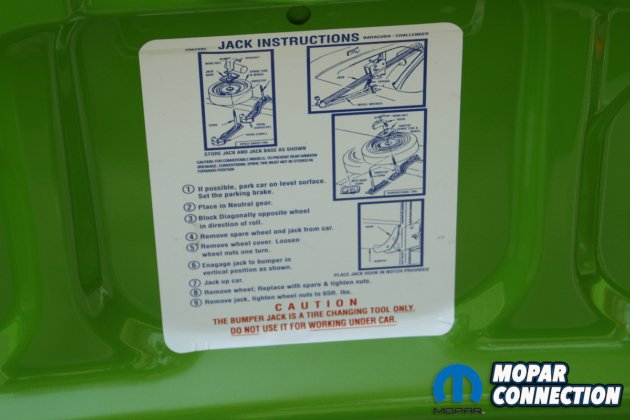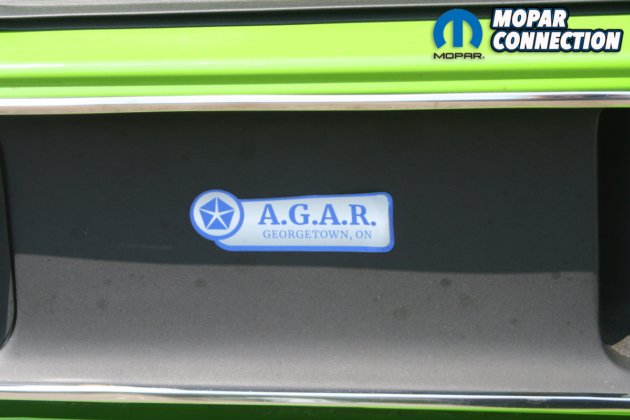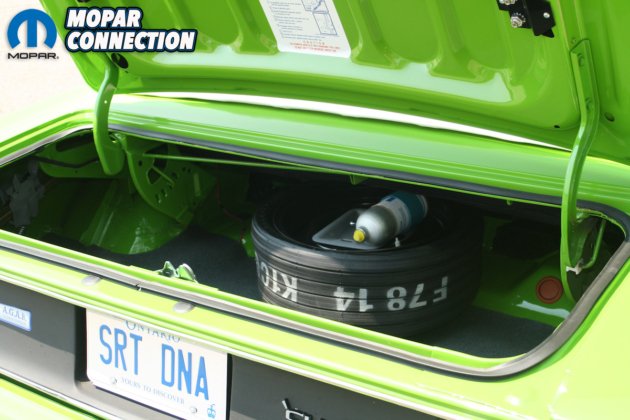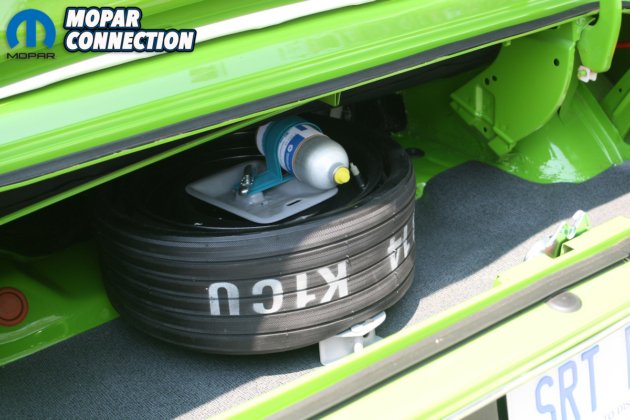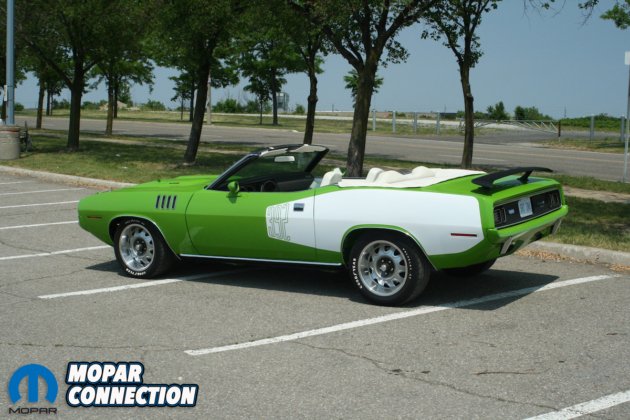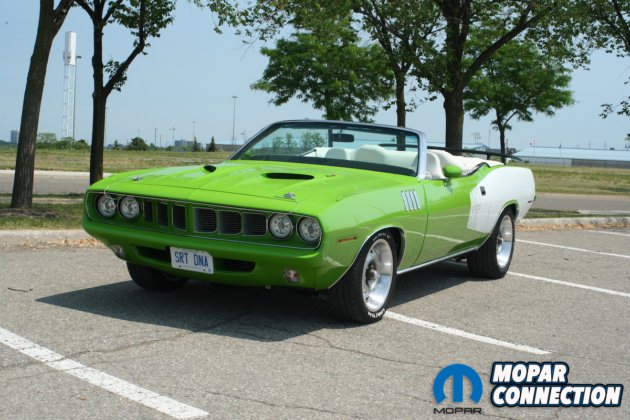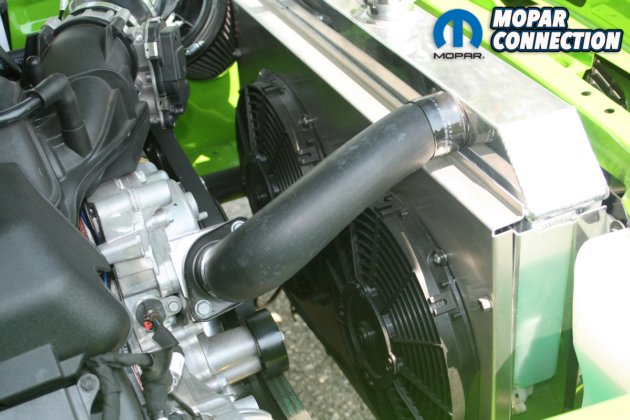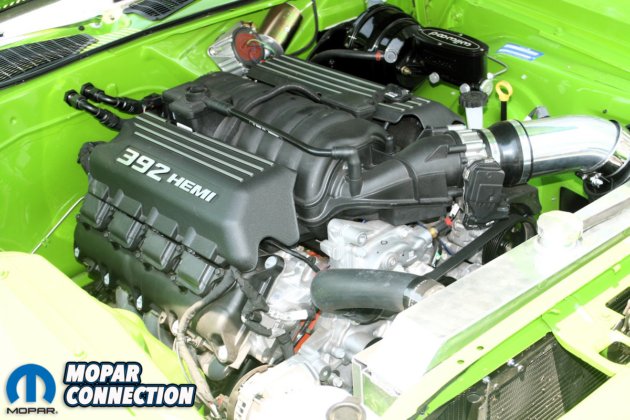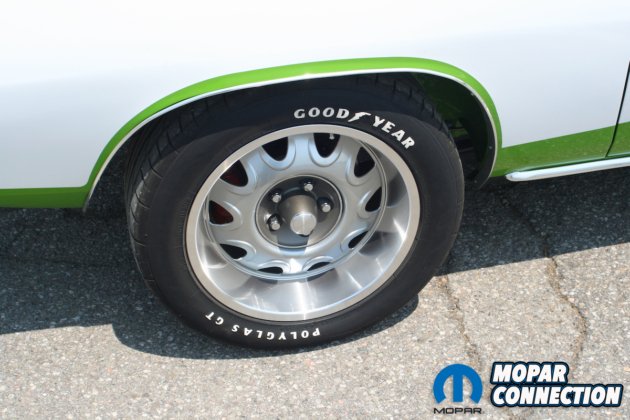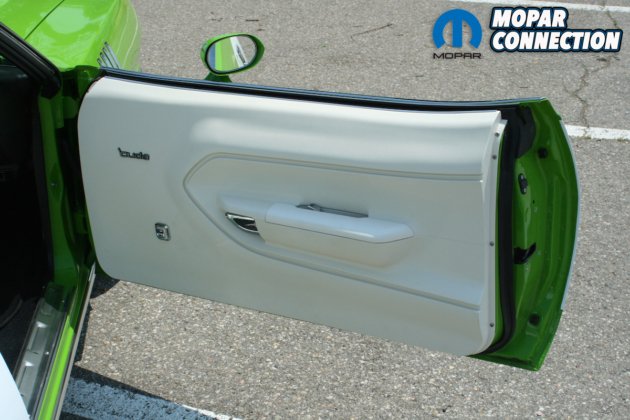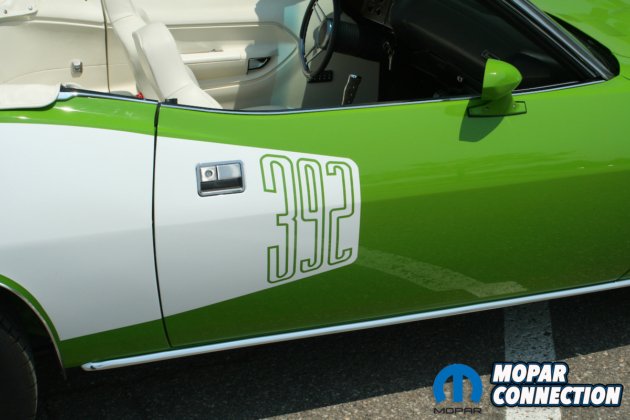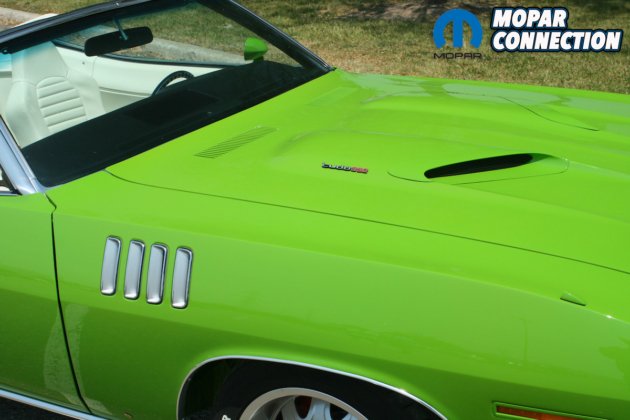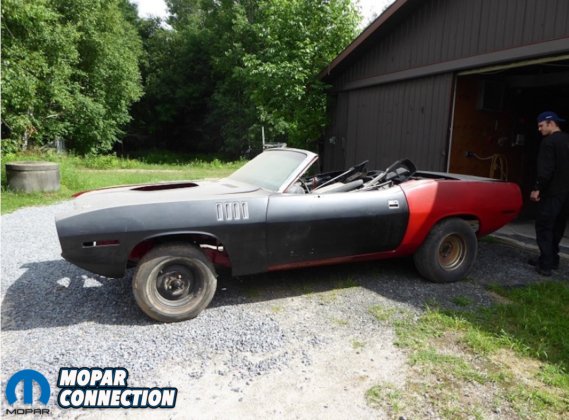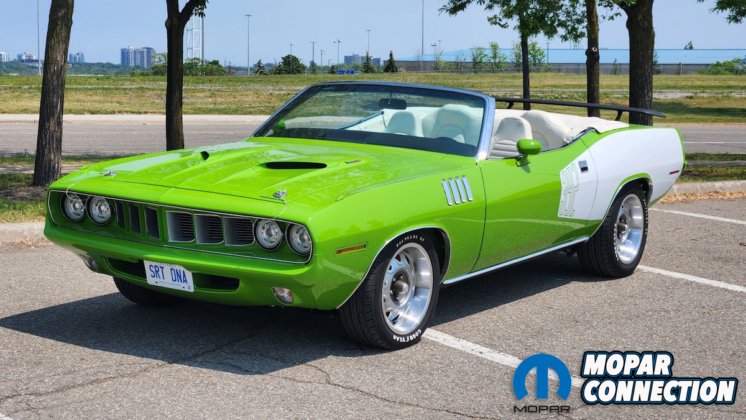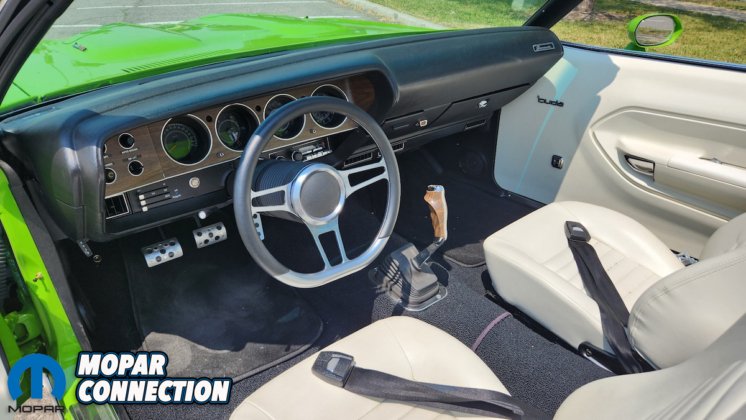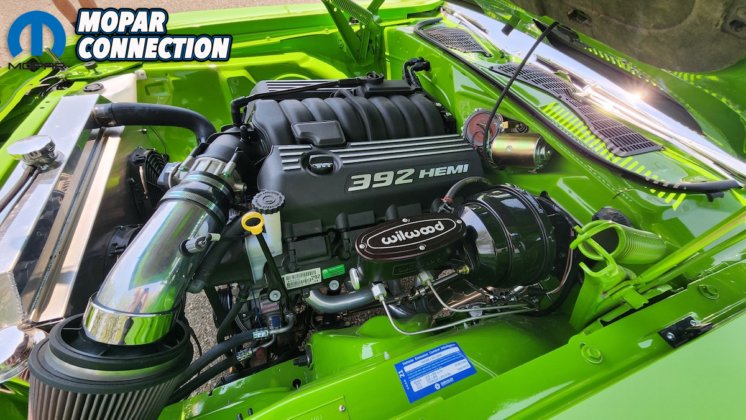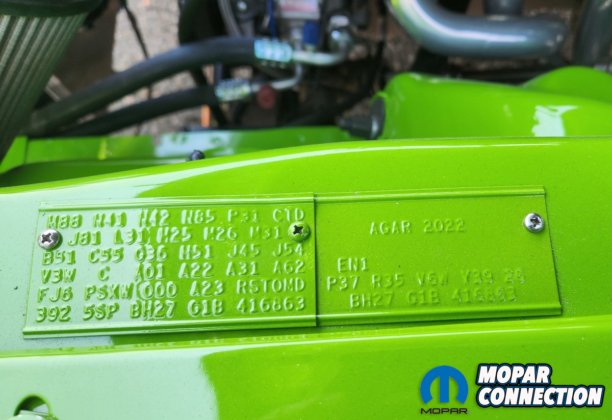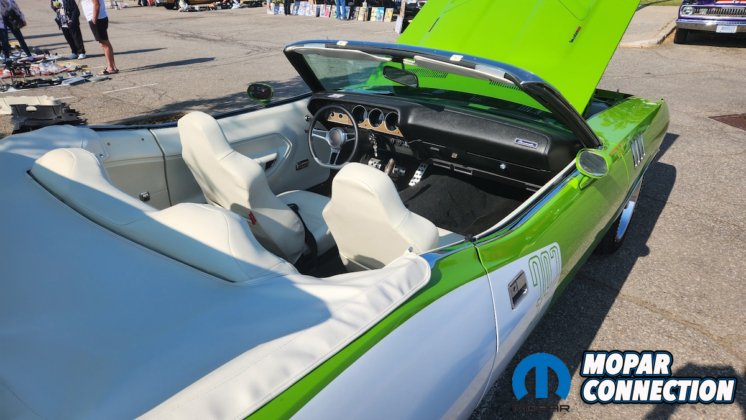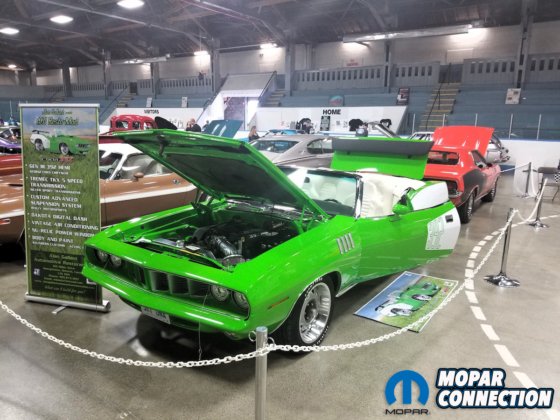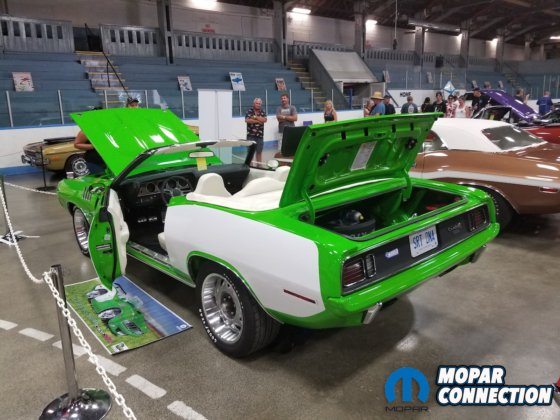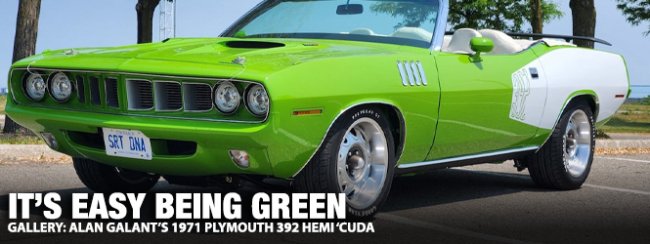
Many of us who are employed do not always find joy in our jobs. However, Alan Gallant is an exception, belonging to the rare group that takes pleasure in their work. Alan has dedicated himself to restoring muscle cars, with a particular emphasis on the Mopar brand.
Alan runs his independent business, Allan Gallant Automotive Restorations, in Georgetown, Ontario, Canada. Since 1987, he has committed to the restoration of car parts and vehicles. In 2010, he shifted to focusing exclusively on car restoration. To date, he has brought over fifty vehicles back to their former glory, with his portfolio consistently growing.
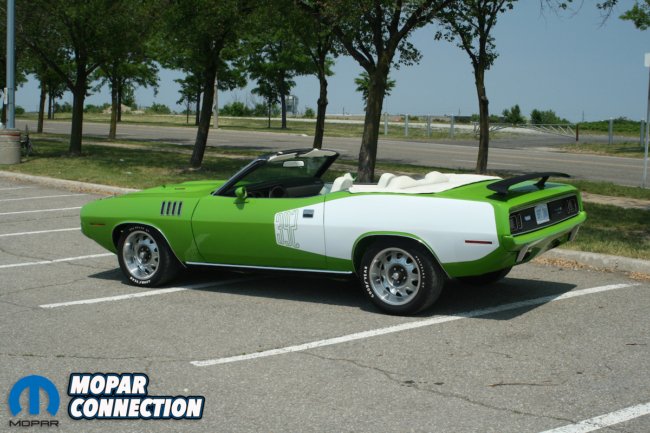
Alan’s knowledge of A, B, and E-body automobiles is amazing. It’s an honor to showcase his remarkable abilities in this prestigious magazine for the first time, since his precise attention to detail has garnered him praise in a variety of magazines.
This car was basically given to Alan. Yes, you read that correctly; it was given to him. It was back in the spring of 2021 that Alan received a phone call from a lovely couple in Huntsville, Ontario, Canada. It seems that they had two 1971 Barracuda convertibles and were looking to sell one in order to pay for the restoration of the other. To say the least, Alan was intrigued, as he stated, “You don’t come across these convertibles too often.”
Following an agreement, Alan received one car in exchange for refurbishing the other. On July 1st, 2021 – Canada Day – both cars arrived at his shop. Initially, Alan intended to store one car at his sister’s house. However, upon delivering it, his sister persuaded him to seize the day, reminding him that the future is uncertain. Heeding her advice, Alan chose to restore both cars concurrently. Regrettably, his sister passed away ten months later.
Now, with a car that was practically given to him, he began to entertain the thought of building a car for himself. Alan said, “It has been a few years since I’ve owned a restored classic.” Since the car was a shell with no engine or drivetrain, Alan considered turning the Barracuda into a restomod muscle car that retains its classic styling while adding modern performance and comfort.
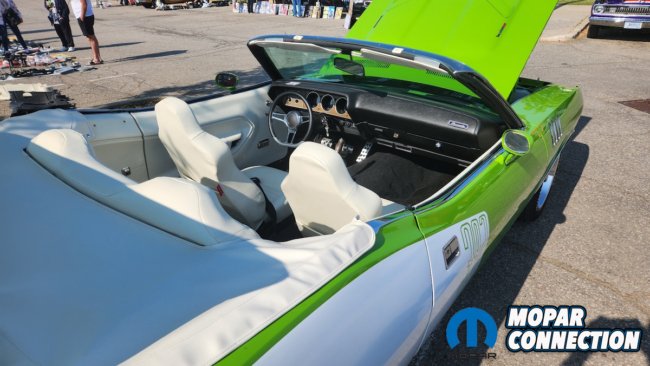
Contrary to some beliefs, ‘Cuda is not merely another name for the Plymouth Barracuda, just as Chevy is to Chevrolet. They are related, akin to a Mustang and a Shelby GT500, but the ‘Cuda was introduced by Plymouth in 1969 as a performance-oriented variant of the Barracuda.
While Barracudas had existed for years, the intensifying muscle car wars necessitated a bolder approach from Plymouth. The introduction of new E-Bodies allowed for the installation of larger engines, enabling the Plymouth division to equip their cars with 383s, 440s, 440+6 barrels, and 426 Hemi engines.
The exact number of 1971 Barracuda convertibles manufactured is relatively low. Regardless of engine size or transmission type, I was able to find a single number, 1,014, that applies to all Barracuda convertible models. A total of 374 cars were built specifically for the ‘Cuda convertibles, 11 of which were Hemi vehicles manufactured at the Michigan plant in Hamtramck. When new, this Barracuda had a 2-barrel carbureted 318 engine that produced around 230 horsepower when paired with an automatic transmission.
Alan quickly set to work dismantling the car. He oversaw the bagging and tagging documentation with great attention to detail, carefully distinguishing between parts that could be reused and those that needed to be replaced. Once all the components were accounted for, attention shifted to the bodywork.
Common rust areas on E-bodies, such as the window channels, trunk pan, floorboards, area behind the front fenders, cowl drain beneath the wiper motor, rocker panels, inner rear wheel housings, lower edge of the tail panel, trunk lid lip, and frame rails, all needed thorough inspection.
Alan farmed out the work to Saunders Customs in Action, Ontario, Canada. Terence and his crew began by replacing the sections that needed to be removed and restoring the elements of the body that could still be saved. In addition, he started modifying the engine compartment to make room for the 392 Hemi, where at one time the 318 once lived.
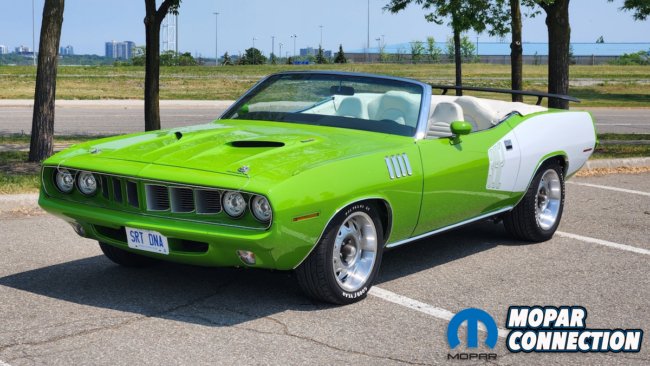
Some holes on the firewall were filled in, and new holes were made for the differences between the 392 and the 318. After the body work was done, primer was added and sanded to get ready for a fresh coat of the vibrant FJ6 paint, known as Sassy Grass Green, enhanced with a slight modification for added brightness. Terence Saunders meticulously applied the paint to the Plymouth.
With the car off to the body shop, Alan then began to focus on the parts needed to complete the car once he received the body back from the paint shop. With so many options available to him, Alan could customize the car to his liking, giving him a blank canvas. This would make the ‘Cuda one of a kind indeed. But before we get to that, Alan needs to install the drive line into the car first.
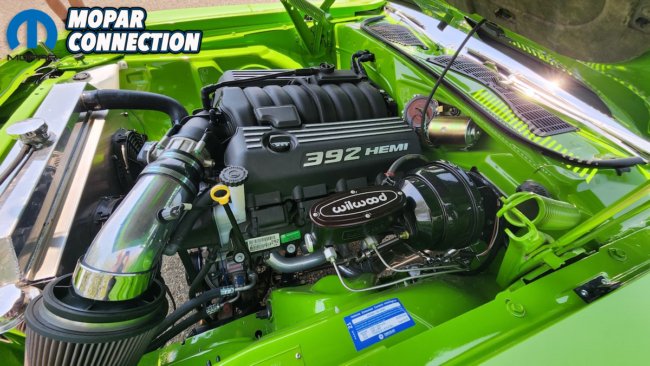
Alan called the local Georgetown Dodge dealership to order a new Crate 392 engine. Alan kept the engine pretty much stock as it had more than ample horsepower. The 392 (6.4 liter) puts out about 485 horsepower and 475 lb-ft of torque. He added a custom cold-air intake. The reason for using TTI headers is that they do have one for the Gen III Hemi application that fits the E-bodies. To keep the 392 Hemi cool, a Frostbite aluminum radiator was added with dual electric fans.
Alan purchased a Tremec TKX 5-speed from SilverSport Transmissions to transfer power to the rear wheels. The TKX 5 transmission, with a torque capacity of 600 lb.-ft., operates at 8,000 RPM and shifts at 7,500 RPM. Its ability to fit most vehicles due to its three shifter locations and adaptable design is a significant advantage. Additionally, Alan opted for the reliable Chrysler Sure-Grip 8 ¾ rear end with 3.73 gears.
Once the body was received, it was time to get the car back together. Reilly Motor Sports helped by providing proper suspension before the power train was installed in the car. Alan installed the AlterKtion Coil-Over System for the 70-74 E-body that will accommodate 5.7, 6.1, and 6.4 Hemi mounts.
The rear of the ‘Cuda uses a Street-Lynx suspension kit for the 70-74 E-body, which is a triangulated 4-bar rear suspension system. Now, the Plymouth is capable of handling as well as having power, much like a contemporary muscle car.
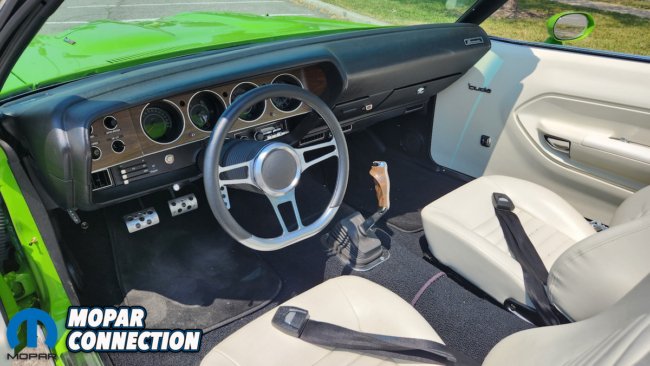
Alan chose the performance hood and Elastomeric bumper for aesthetic reasons. Hood pins, wheel lip moldings, body-colored dual racing mirrors, and chrome-tipped exhaust are all on the vehicle. It has a rear wing and belt moldings as well. A custom stainless-steel exhaust was constructed for this car.
A custom white billboard stripe featuring a 392 callout was added to the Sassy Grassy green paint to complete the ensemble. Modern upgrades include headlights from Dapper Lighting, with halo rings to be used as daytime running lights. Alan went with a white top to add to the look of this awe-inspiring car.
Paul from Horton Hotrods from Milton, Ontario, provided numerous aftermarket parts and guidance both inside and under the car during this build. Such items as the power windows from Nu-Relic or Vintage Air AC were added. The instruments were from Dakota Digital.
What sets Alan’s build apart is the custom-made emission decal and fender tag he had made to make the car look like it had them when it rolled off the assembly line. The fender tag on this car indicates the added items. I counted 24 items added to what was a very basic car from the start.
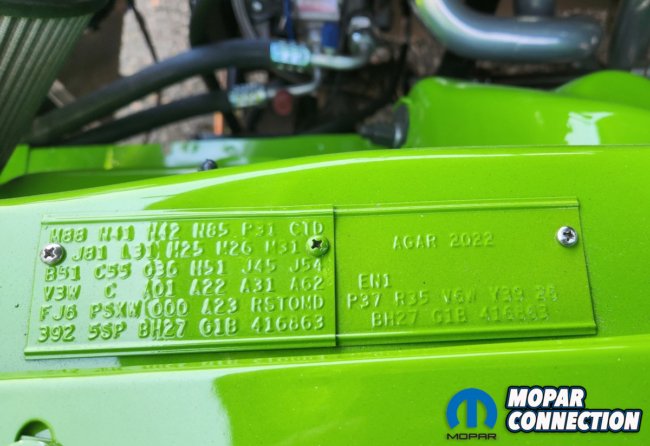
The car features a Rallye instrument cluster with tachometer, power brakes, AM/FM stereo radio, power windows, and a power top, just to name a few. A Hurst pistol grip floor shifter sits on the transmission tunnel. Bright pedal dress-up gives the foot wheel area some bling.
The interior is all new, with custom Cipher reclining bucket seats and a custom-made rear seat by John Wilkie. The floor was insulated with Dyna-mat for minimum interior noise and heat transfer when the top is up, but it is hidden under the new carpet. Scott Davis installed the new top and glass.
The ‘Cuda is equipped with Nitto NT555 225/50R 17s up front on 8-inch YearOne 17″ Rallye retro rims and 255/50R 17s in the rear on 9-inch rims. To give the tires an even more vintage look, Goodyear Polyglas lettering was added. With upgraded suspension, the convertible rides beautifully.
We first laid eyes on the car at the main arena during the 2022 Moparfest. However, it wasn’t until the 2023 Spring Fling Mopar show in Mississauga that we had the opportunity to converse with Alan. That’s when we learned more about both the car and Alan. The vehicle offers a nostalgic glimpse of the 1970s, paired with modern-day handling and performance. Alan truly has the best of both worlds, capturing attention wherever he goes.



